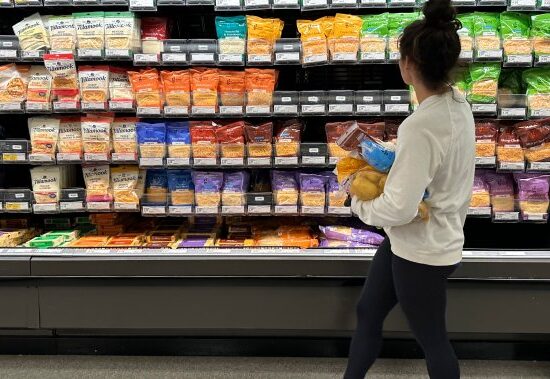
Arie Calero-Romero was just 12 years old when an incident at an Ottawa-area group home left him with a broken arm.
“I heard a little snap in my ear,” said Calero-Romero, who at the time lived in a residence owned by the private company Mary Homes. “They said, ‘Oh, you know your arm’s fine. Don’t worry.’”
Developmentally delayed, Calero-Romero lives with several diagnoses, including ADHD and oppositional defiant disorder – a condition where kids can be hostile towards peers, parents or authority figures.
According to Mary Homes’ records, on the evening of Sept. 12, 2019, staff entered his room after they heard him screaming and banging on walls. Calero-Romero said a kid in another room was causing the commotion and he was just trying to go to sleep.
The 12-year-old struck staff, the company alleges, who then forcibly held him to the floor, where his left arm was broken.

He disputes Mary Homes’ account of that night and has filed a $200,000 lawsuit against the company for “assault and battery” or negligence.
“Mary Homes is kind of like a hell place,” said Calero-Romero, who will turn 15 later this month. “Whenever I talk about Mary Homes, I just want to physically shut it out.”
A physical restraint can involve staff pinning a child to the ground by the shoulders and holding them by their wrists with their arms extended. Sometimes they are held face-down on the ground.
“For me, it feels like a body check to the floor,” Calero-Romero said.
This measure is supposed to be a last resort – used only when children are at imminent risk of injuring themselves or others, according to the province.
Dr. Mirisse Foroughe speaks with Global News and APTN about the “terrifying” experience of being restrained.
(Global News)
But a Global News and APTN investigation has found that physical restraints occur at an alarming rate inside Ontario’s group homes, in which kids – 17 and younger – live in communal houses with staff.
Experts say the use of restraints is psychologically damaging to kids and can actually make them more aggressive, leading to a cycle of violence and the unintended consequence of more physical holds.
Dr. Mirisse Foroughe, a clinical psychologist in Toronto, said that being restrained is a “terrifying experience” in which kids feel a loss of control, a sense of panic, and betrayal.
She said it’s also not effective at decreasing aggression in the “long run.”
“What happens over time is they become more angry, resentful, less trusting of adults and more likely to be aggressive,” she said.
For youth like Calero-Romero, Foroughe said physical holds can trigger ”retraumatization.”
“They will have specific flashbacks of experiences … and these will last throughout their lives,” Foroughe said.
Physical restraints used more frequently
Privately owned group homes like Mary’s use physical interventions – another term for restraints – far more frequently than other kinds of homes.
While they make up just 20 per cent of beds in the child welfare system, they account for 90 per cent of all restraints. Foster homes and other care settings filed reports for restraints at a dramatically lower rate.
Global News and APTN’s analysis found more than 2,000 reports of physical restraints across the province’s child welfare system.
The data involving restraints comes from more than 10,000 serious occurrence reports (SORs) filed between June 2020 and May 2021. These reports also document instances in which a child dies, is injured or goes missing, among other events.
Mary Homes, which has five residences in the Ottawa area, had the second-highest number of SORs in the province, just over 700, according to the data.
Of those, 419 reports were filed after staff laid hands on a youth – among the highest use of restraints in the province.
READ MORE: Inside Ontario’s ‘scary’ child-welfare system where kids are ‘commodities’
To better understand Calero-Romero’s care at Mary Homes, Global News/APTN reviewed at least 1,500 pages of case notes, incident reports, medical records and other files about him.
The documents allege he engaged in “physical aggression towards staff and peers” and other “inappropriate sexualized behaviours towards staff members” during “aggressive episodes.”
Records show staff physically restrained Calero-Romero 69 times between May 2019 and December 2020 – 12 of those incidents in July 2019 alone.
Nearly 90 per cent of the physical interventions involved him being forced to the ground – including more than 30 instances where he was “face down” or “prone,” according to the documents.
The longest physical intervention lasted an hour and a half, according to the documents. Twenty-five lasted roughly 45 minutes or longer.
Mary Homes refused repeated requests to comment on the allegations by Calero-Romero and other former residents who previously spoke with Global News/APTN.
The company also refused to comment on the data showing a high number of restraints inside their five group homes. In court documents, it said it intends to defend against the lawsuit.
READ MORE: Inspection reports reveal disturbing conditions inside Ontario group homes
Some group homes prohibit the use of restraints altogether. A 2017 government-funded report by a panel of 18- to 25-year-olds who’d lived in residential care settings and a government “blueprint” on child welfare reform called for their use to be minimized. Another report called for more training on crisis de-escalation strategies.
“When you know you can use restraints, it’s easy to go there and rely on that rather than training your staff to be able to de-escalate and use other methods,” said Foroughe.
Other youth who lived at Mary Homes previously told Global News/APTN that staff were often quick to use physical restraints rather than try to speak calmly with kids.
On the night Calero-Romero’s arm was broken, he said he was “playing with Lego” and just trying to “go to sleep” when he heard a kid in another room banging on a wall.
But a report filed with the ministry by Mary Homes describes how a staff member heard Calero-Romero crying in his bedroom that evening, provided him with Tylenol and water for a headache, and told him to try to get some sleep.

Within a couple of minutes, Calero-Romero started to disrupt other residents by screaming and banging on walls before starting to punch a staff member, the company reported.
When that staff member “was no longer able to block and deflect the strikes safely,” they and another employee physically restrained him.
Calero-Romero continued to “fight staff with extreme force.” Two employees then tried to move him into another position on the floor, the report reads. During the transition, staff lost balance falling to the floor.
Moments later, the youth said his arm was broken and the employees “disengaged” to assess him for injury, according to the company. Calero-Romero said staff were initially dismissive of his injury.
Roughly 15 minutes after the restraint began, staff called paramedics to the residence, who took him to a children’s hospital where X-rays revealed a fractured left humerus, the document said.
Calero-Romero now lives at home in Hamilton with his parents and the help of Genesis Support Services, a company that helps kids with complex needs.
He said he’s been physically restrained just once and is happy to be living at home. Citing privacy concerns, Genesis declined to comment.
“They don’t even put (their) hands on me,” he said. “They just try to cooperate with me and tell me to calm down.”
READ MORE: NDP, Green Party call for end to for-profit care in Ontario child-welfare system
He and other youth who have spoken with Global/APTN want to see Mary Homes closed.
“I thought it was like a prison,” he said.
“I feel bad for the other kids who might be there right now.”
Last January, the Ministry of Children, Community and Social Services imposed conditions on some of Mary Homes’ group home licenses, including a requirement to submit an updated policy on the use of restraints, which employees would have to learn and adhere to.
The ministry also instructed senior managers at one home to follow up with staff within 24 hours of an incident, where a restraint is used. If the manager discovers that an employee didn’t follow provincial regulations, the manager would have to prepare a report they’d then have to keep on-site and provide to ministry staff on request.
Steve Hall is a crisis intervention trainer in the Greater Toronto Area who has worked with Syl Apps Youth Centre, probation services, and the Ministry of Children, Community and Social Services on how to properly administer physical restraints.
Hall said the “vast majority of the situations” where he’s witnessed or been involved in a restraint could have been avoided if the adult had been more emotionally balanced.
“The best restraint is not to do one,” he said. “It tells me that adults have lost control.”
© 2022 Global News, a division of Corus Entertainment Inc.
















